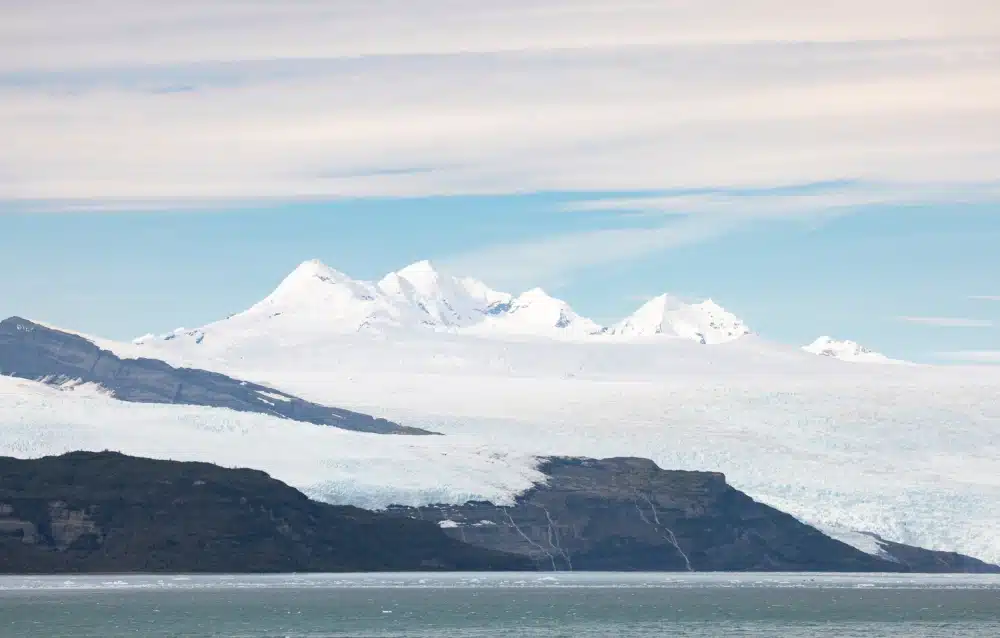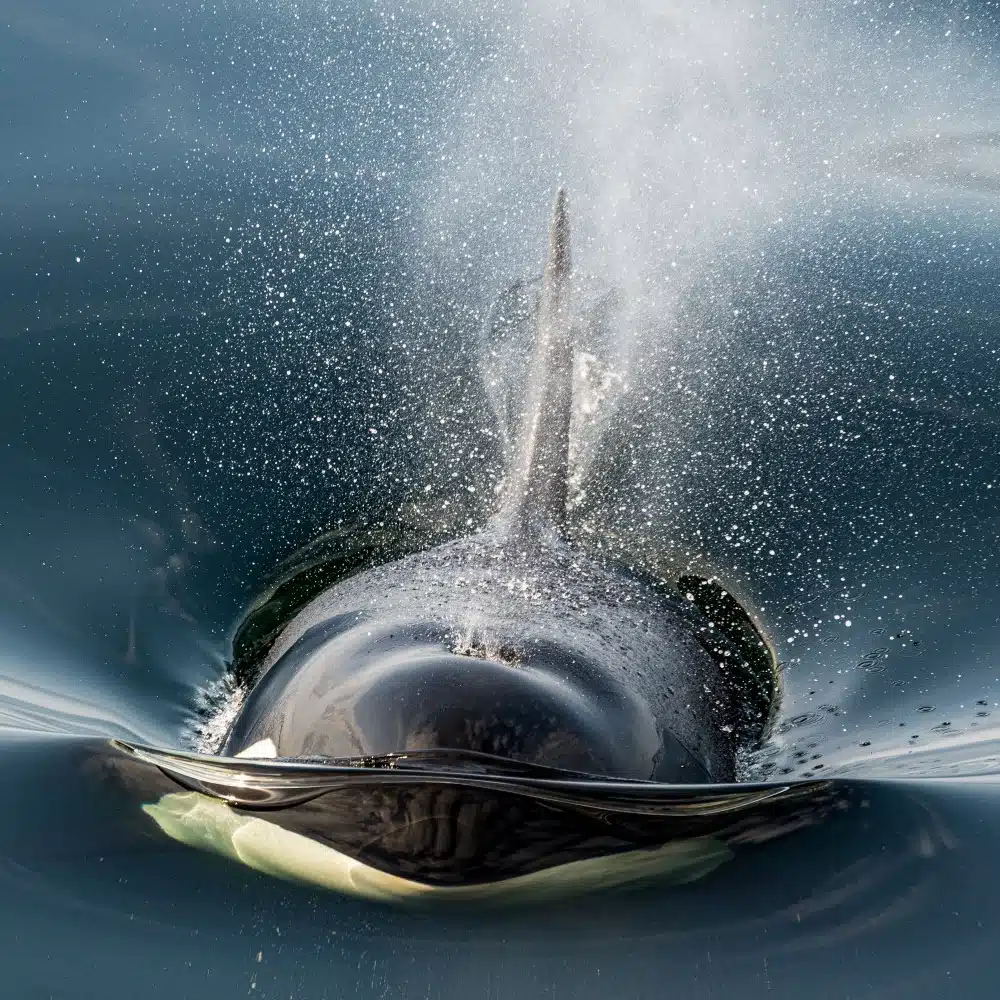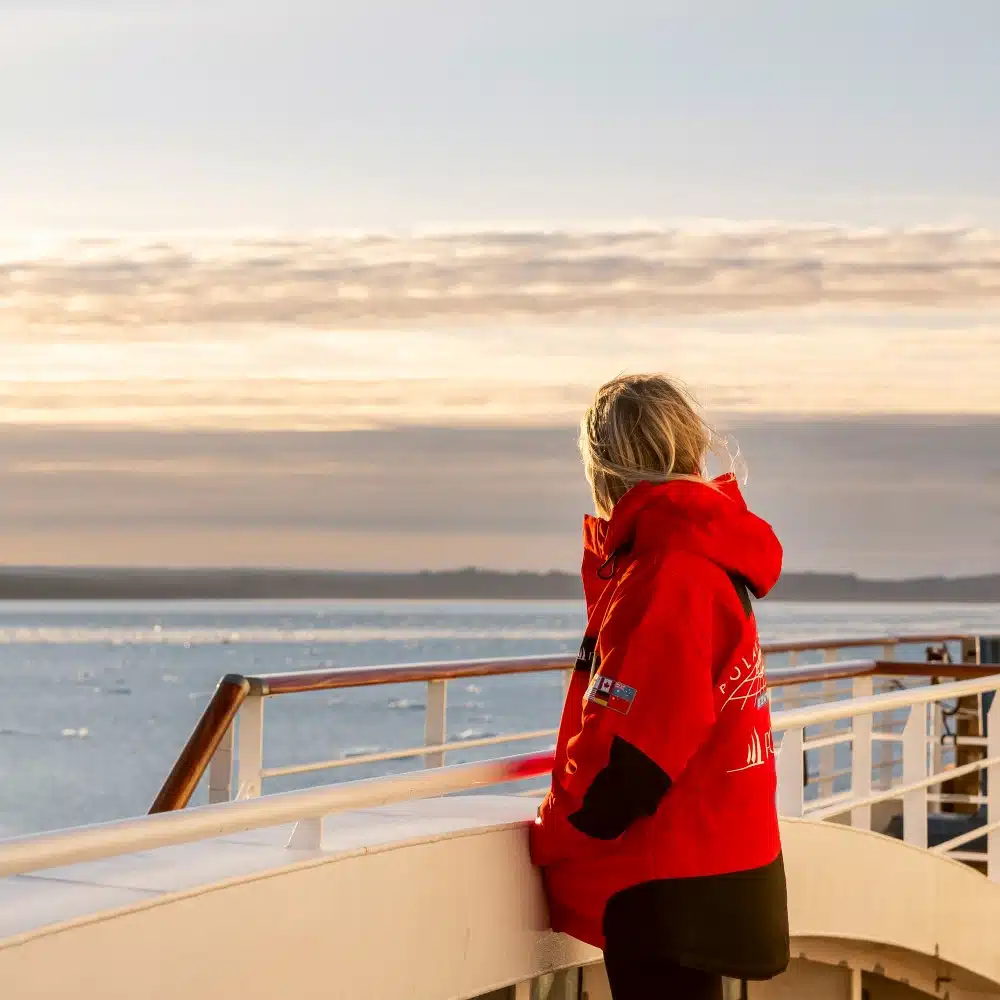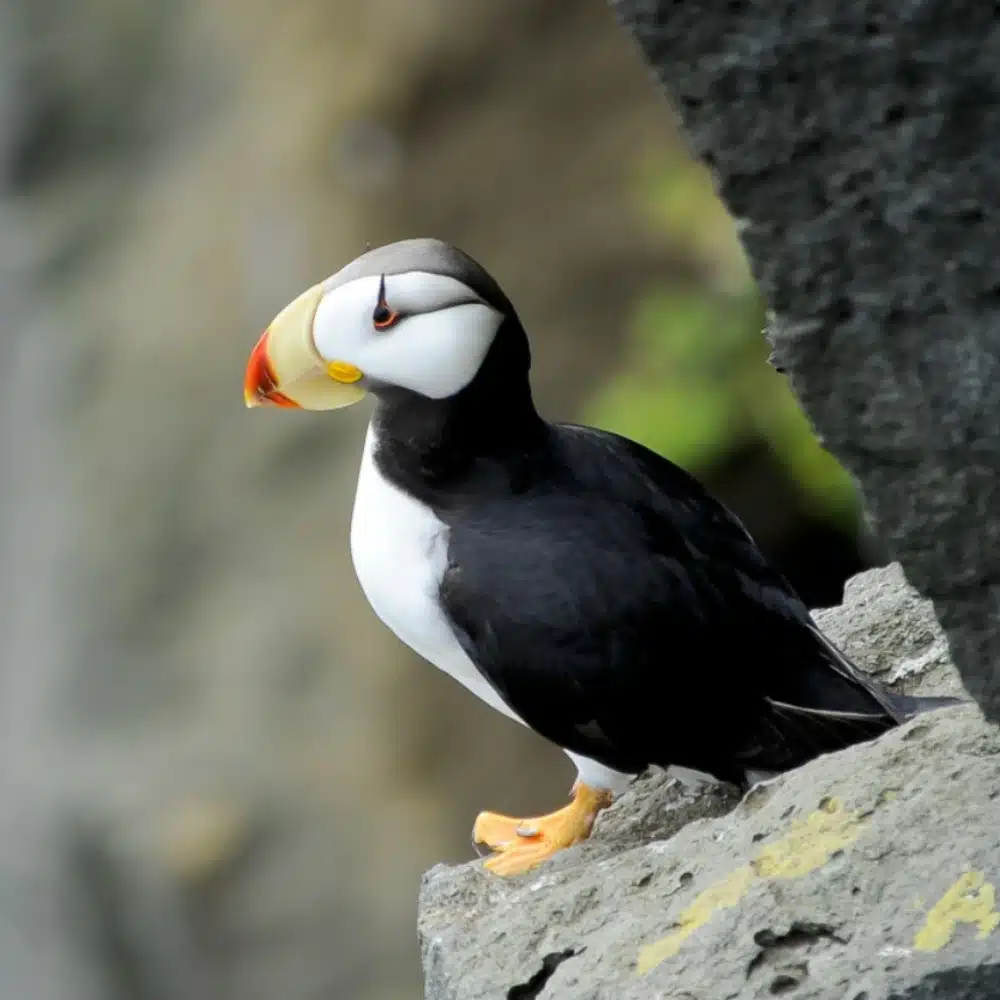Nestled between the rugged Chugach Mountains to the north and the Kenai Peninsula to the west, Prince William Sound embodies the untamed wilderness and rich maritime heritage of Alaska. If you’re seeking a deeper understanding with indigenous cultures and an awe-inspiring array of Arctic marine life, we invite you to join PONANT and The Explorers Club on our luxury expedition, Alaska, Nature on a Grand Scale.
The magnificent waters of Prince William Sound beckon adventurers, historians, and nature enthusiasts alike. This tranquil wonderland of islets, glaciers, icebergs, narrow fjords, and dense forests of Sitka spruce and western hemlock hides many fascinating secrets. You’ll learn all about them during our special expedition with The Explorers Club members Isabelle Groc, an award-winning writer, photographer, and filmmaker who studies the relationship between nature and humans; and Jessica Glass, an Assistant Professor of Fisheries Genomics at the University of Alaska Fairbanks.
We preview this illuminating voyage below, with an overview of those that have called Prince William Sound home, the bustling ports that connect Alaska to the world, and the rich biodiversity that teems beneath the sound’s waves.
A History Shaped by the Sea
Indigenous Roots. Long before European explorers set foot here, the shores of Prince William Sound were home to indigenous peoples, including the Eyak, Chugach, and Ahtna. These communities, with their deep connection to the land and sea, thrived in the harsh environment. They hunted forests for food, felled timber, and fashioned spears from the natural resources that surrounded them on land. And from the bountiful waters of the sound, they found nourishment and created clothing and shelter out of seal pelts. The sea was a vital resource for the survival and sustenance of these resilient cultures.
Exploration and European Contact. In 1778, European explorers, most notably the British Captain James Cook, charted the waters of Prince William Sound. Upon Cook’s arrival, he called his discovery Sandwich Sound after the Earl of Sandwich. Later, it was renamed for King George III’s 13-year-old son William Henry. In 1790, Spanish explorer Salvador Fidalgo made landfall and gave Spanish names to Valdez, Cordova, and other ports. European arrival marked the beginning of a new chapter, as fur traders and explorers sought to benefit from the region’s abundant natural resources. The quest for sea otter pelts, in particular, drove a lucrative fur trade. With it, a new dynamic was introduced to the area: geopolitics and capitalism.
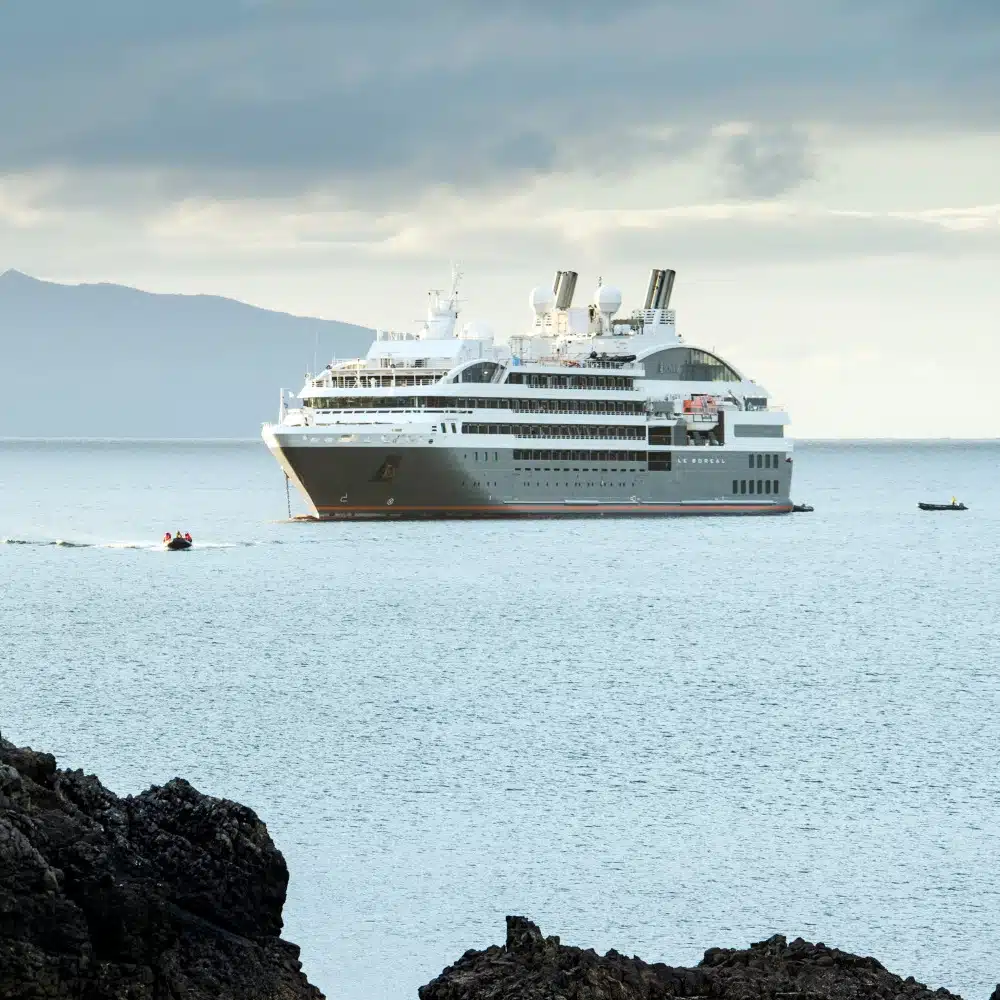
Main Ports: Gateways to the Wilderness
Valdez: The Keystone Port. As the southern terminus of the Trans-Alaska Pipeline, Valdez serves as a crucial way station for transporting oil from the interior to awaiting tankers. Nestled at the foot of stunning snowcapped peaks, Valdez is both an economic hub and a gateway for adventurers eager to explore the surrounding wilderness. The port’s deep waters accommodate large vessels. Making it a vital player in Alaska’s maritime industry. After the catastrophic 1989 Exxon Valdez oil spill in which a tanker ran aground, strict regulations were established here to govern shipping lanes.
Whittier: A Gateway to the Sound. At the foot of the Chugach Mountains, Whittier is a unique port town with a fascinating history. Originally established as a military outpost during World War II, its strategic location has made it a significant maritime center. The Anton Anderson Memorial Tunnel, the longest combined vehicle-railroad tunnel in North America, provides access to Whittier. Creating a direct link between the town and the port itself.
Cordova: Where Fishing Tradition Endures. Cordova, situated at the head of Orca Inlet, embodies the delicate balance between tradition and modern industry. Renowned for its Copper River salmon, the town’s fishing industry remains central to its identity. In Cordova’s picturesque harbor, the community converges with the sea as commercial fishing vessels share the waters with recreational boats against a backdrop of mountains cloaked in snow.
Seward: From Russian Roots to U.S. Territory. To many travelers – including PONANT guests – the gateway to Prince William Sound is Seward, located near the waterway’s southern coast. Russian trader Alexander Andreyevich Baranov was the first non-native to set foot here in 1793. Calling it Voskresenskii and setting up a fur-trading post. His arrival heralded in a 74-year Russian presence in the region. That presence ended in 1867, when the United States purchased Alaska from the Russian Empire under Secretary of State William Seward and President Andrew Johnson.

Marine Life on a Spectacular Scale
Rich Biodiversity. Prince William Sound provides for a stunning diversity of wildlife, making it a haven for eco-travelers and researchers alike. Nutrient-rich waters support a thriving ecosystem. From microscopic plankton to majestic whales and every creature in between, including otters, orcas, grizzly bears, bald eagles, and sea lions. Our onboard naturalists, Photo Ambassador, and The Explorers Club members help you keep your eyes peeled and give you insight into all the incredible wonders you’ll witness.
Prolific Fisheries. Prince William Sound is a treasure trove for commercial and recreational fishermen alike. Iconic salmon species, including sockeye, coho, and chinook, navigate its currents during their annual migrations. Luring anglers from around the world. The region’s commitment to sustainable fishing practices ensures the continuation of this vital industry while having a minimum impact on the delicate balance of the ecosystem.
Seabird Sanctuaries. In addition to its marine mammals and fish, Prince William Sound is a haven for seabirds. Puffins, kittiwakes, and murres nest along the cliffs and rocky shores. Creating bustling colonies that contribute to the region’s vibrant ecological tapestry. The sight and sound of thousands of seabirds in flight add to the majesty of this pristine wilderness.

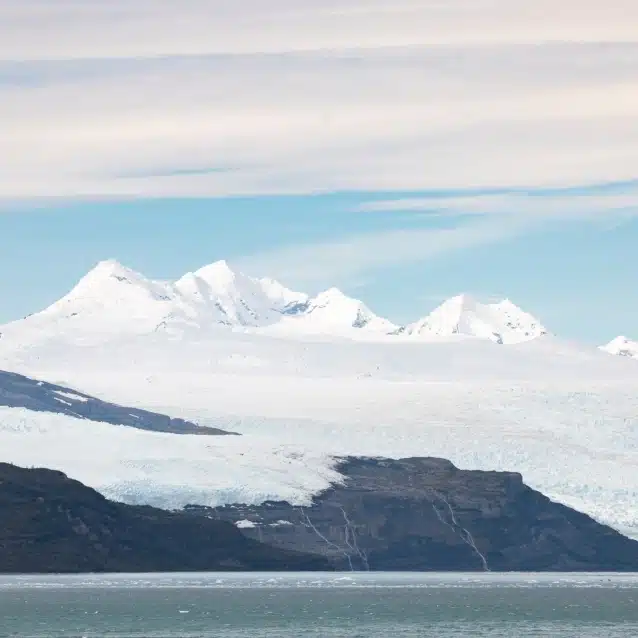
Join PONANT on a Polar Expedition
From Alaska and the Northwest Passage to Spitsbergen, Antarctica, and the North Pole, let PONANT take you there.

